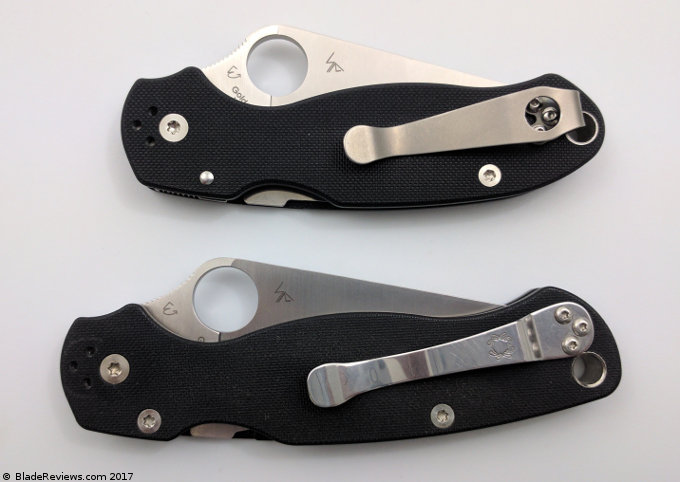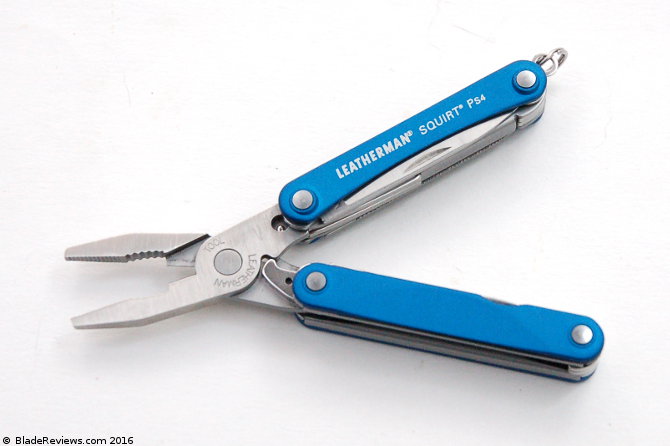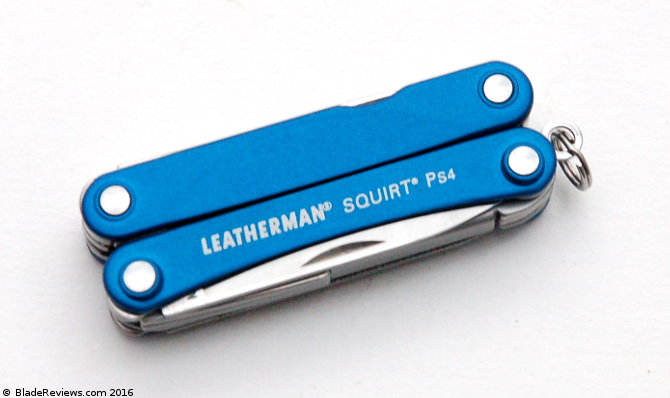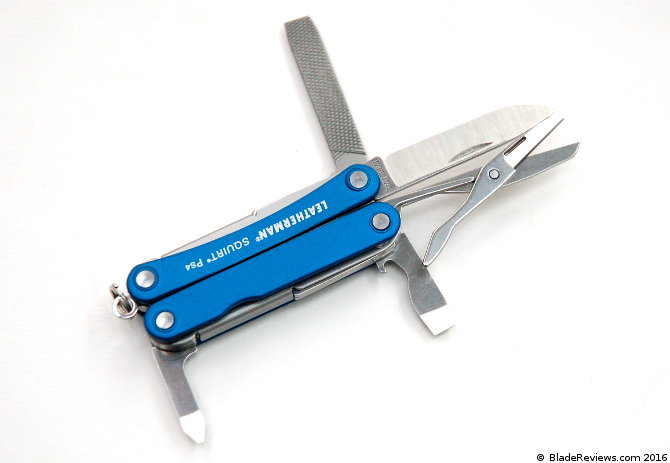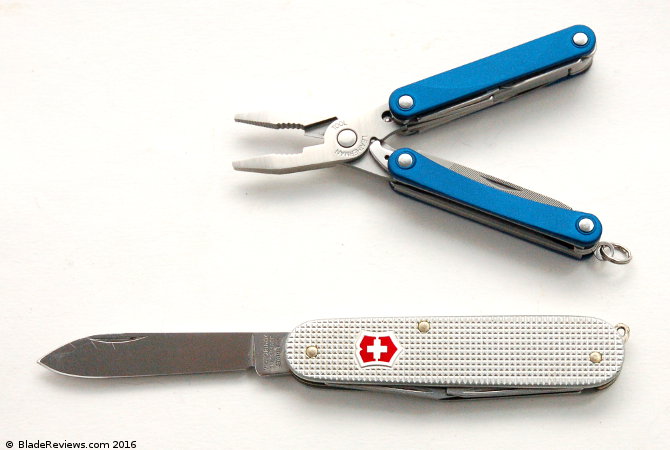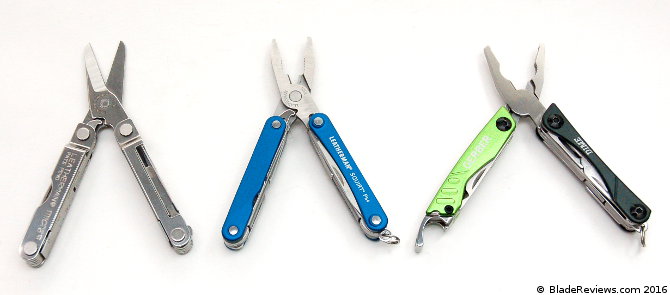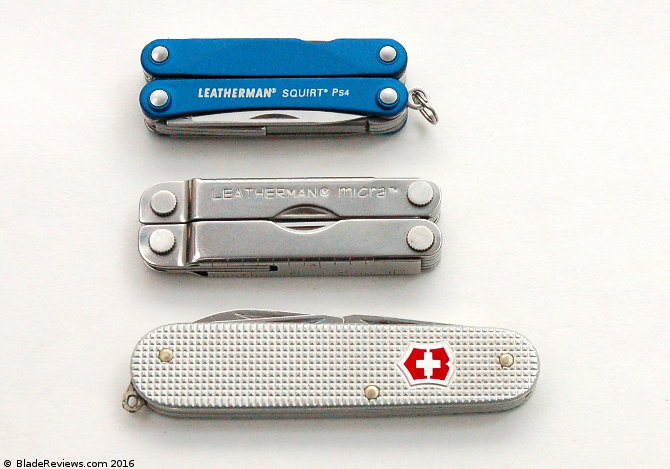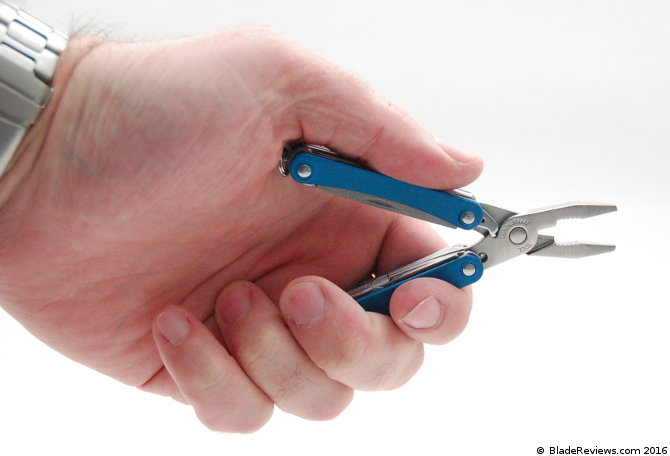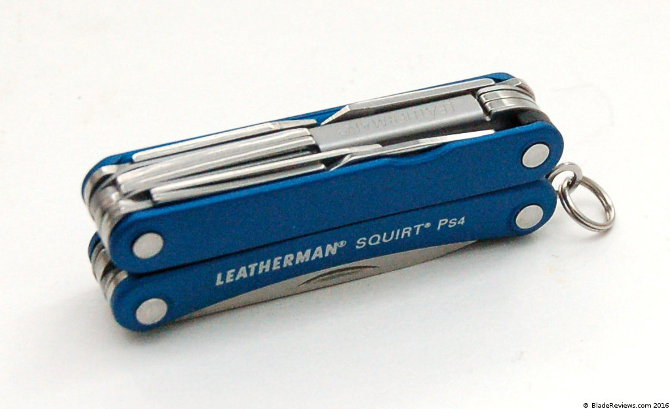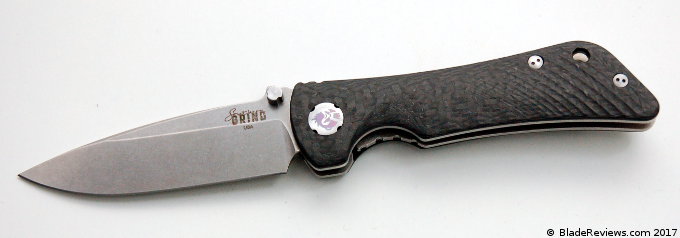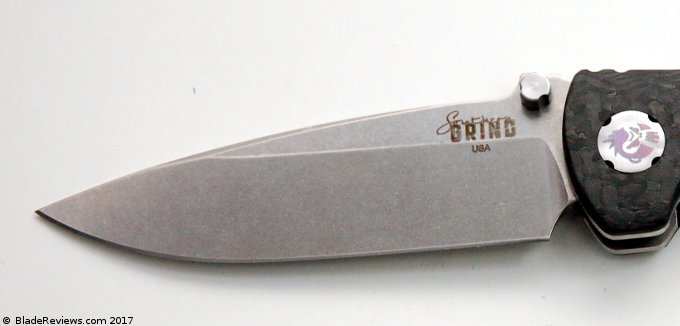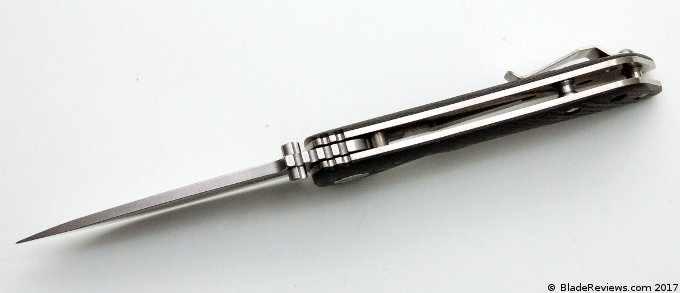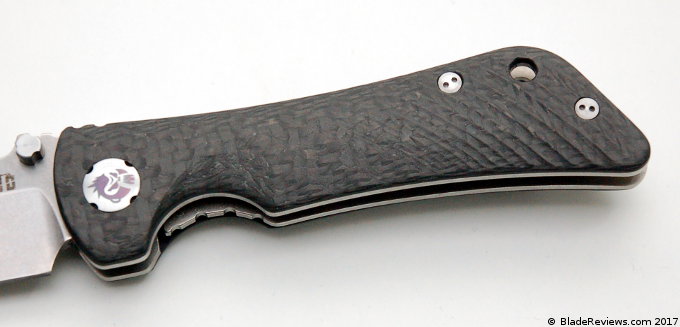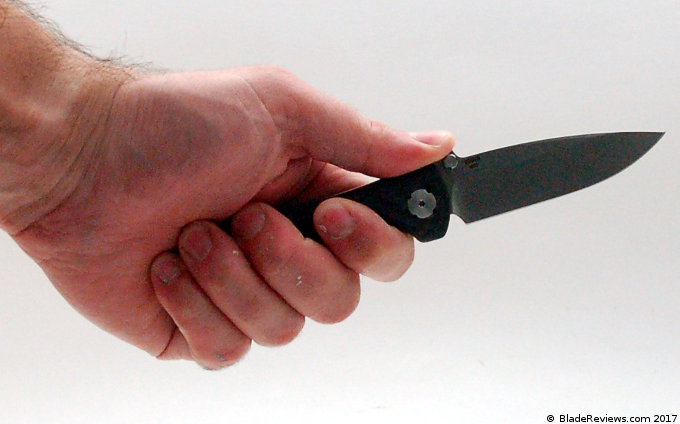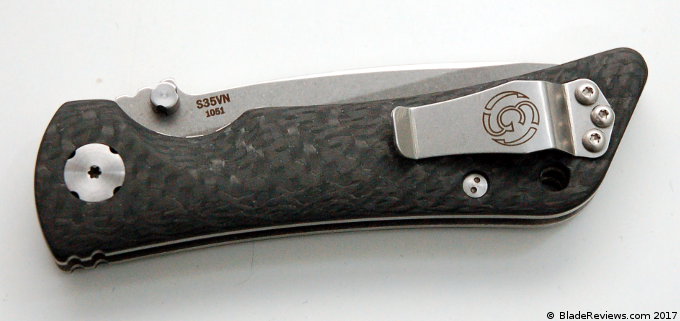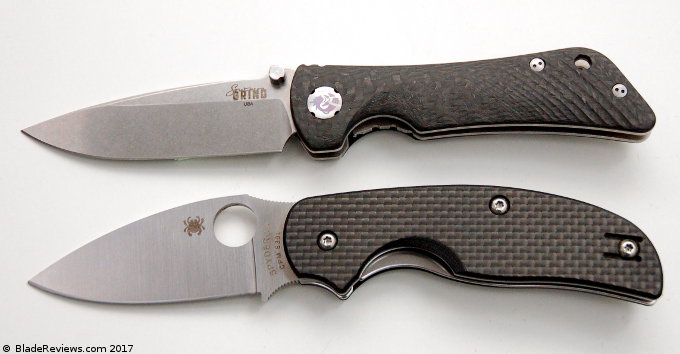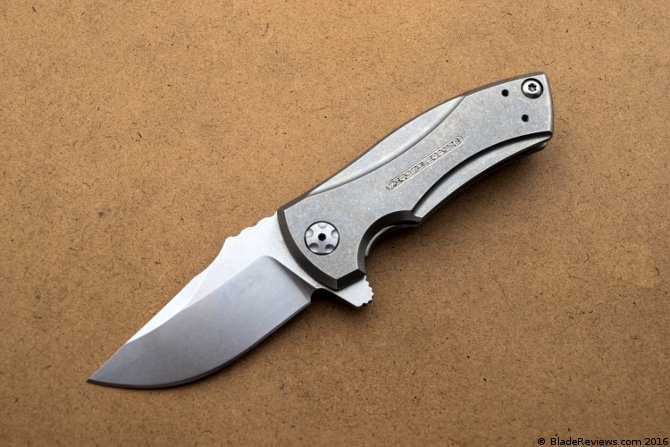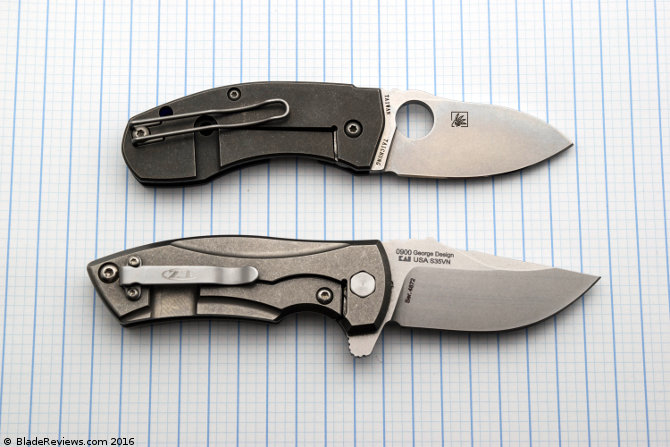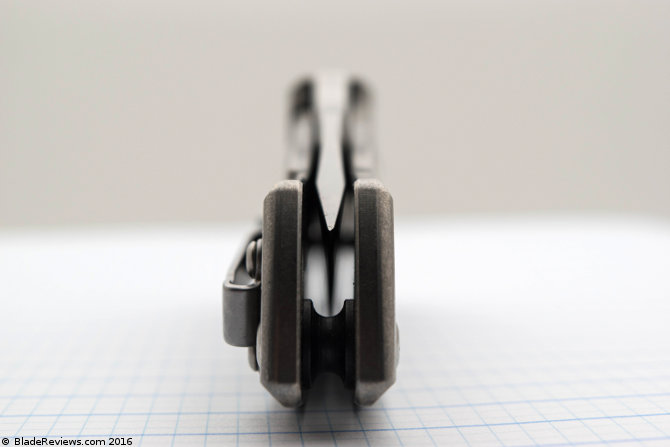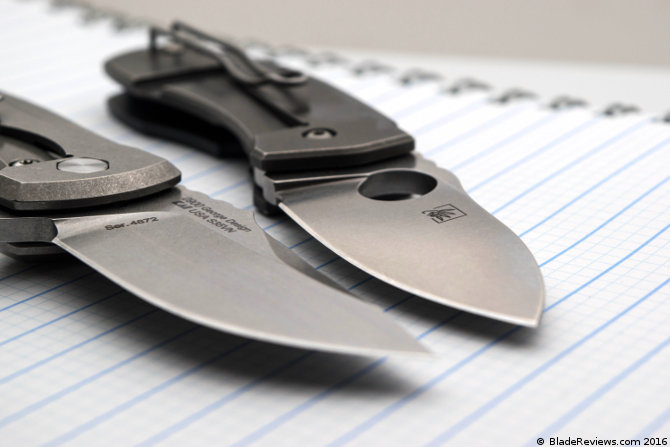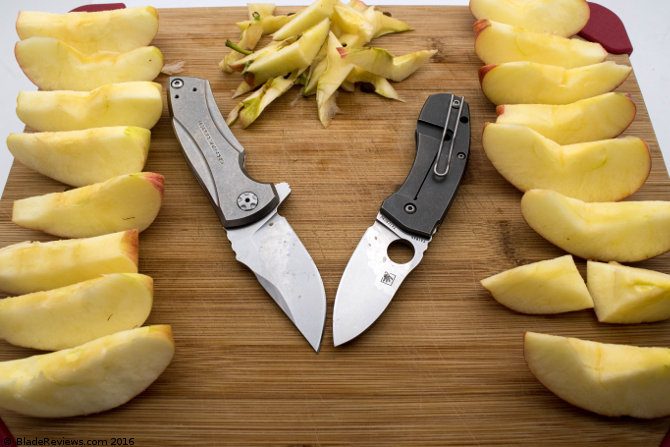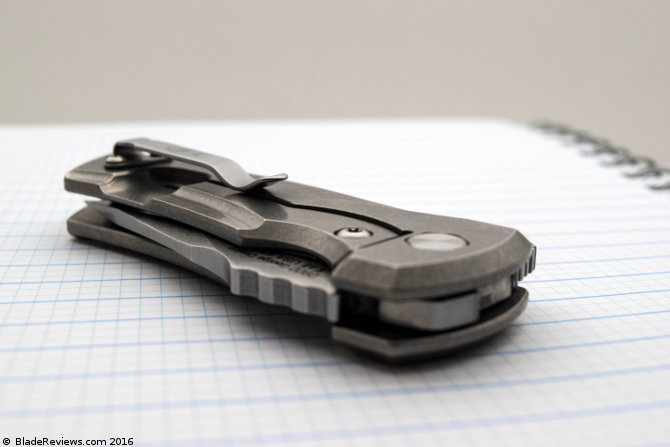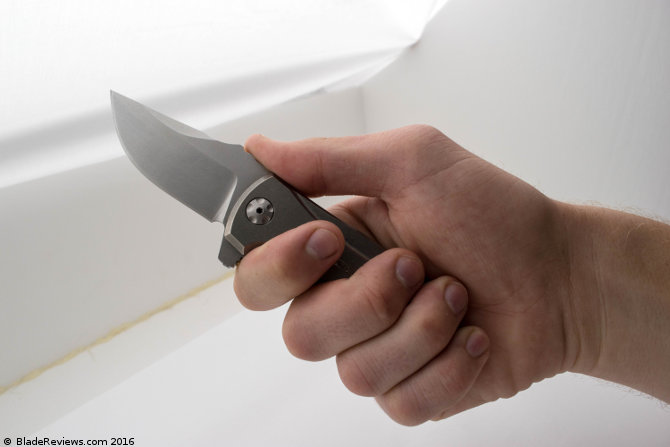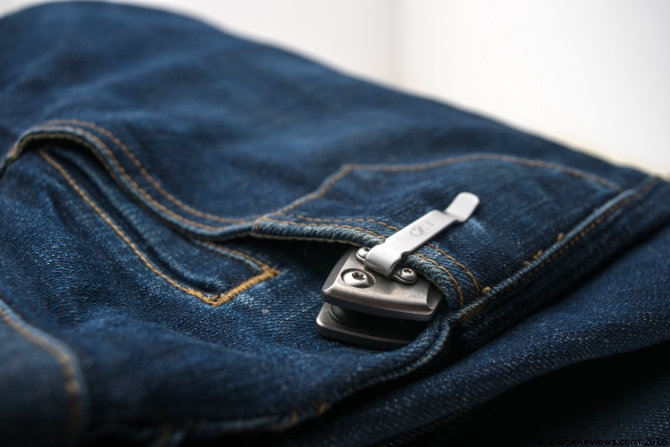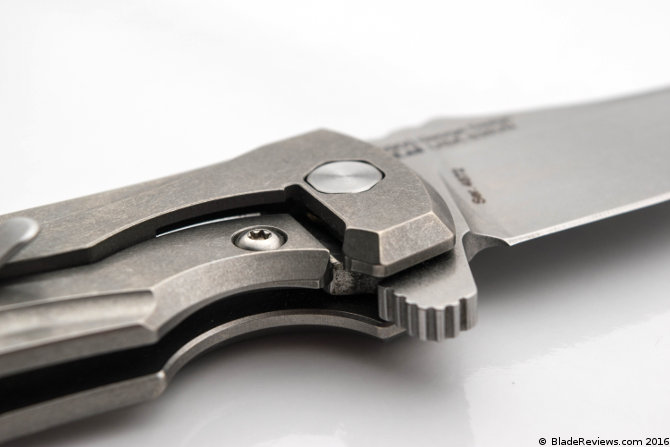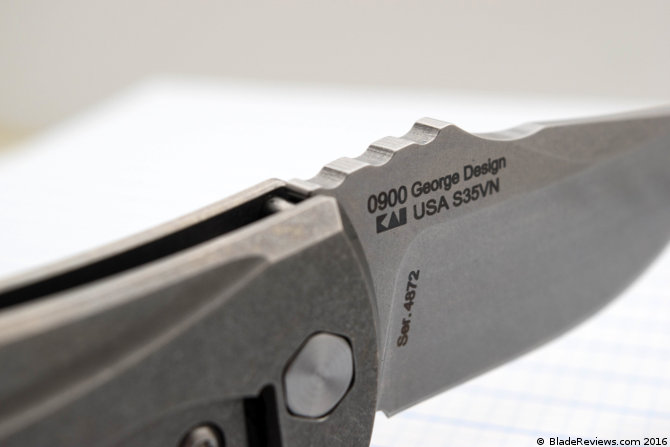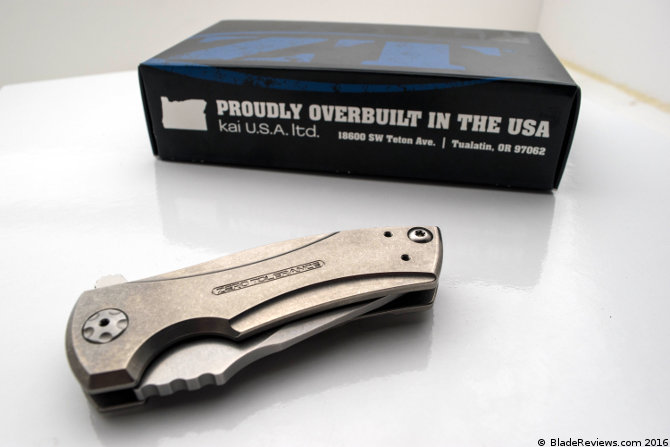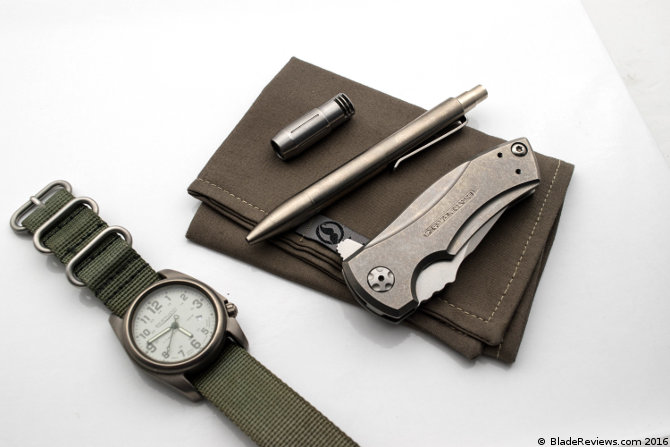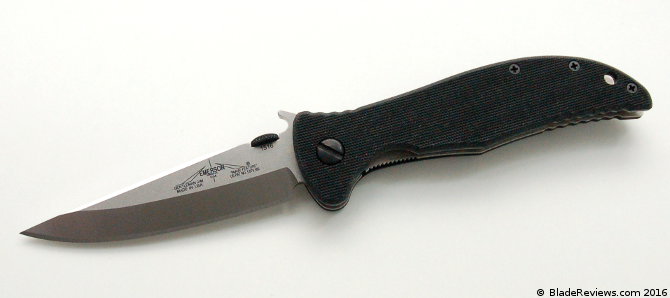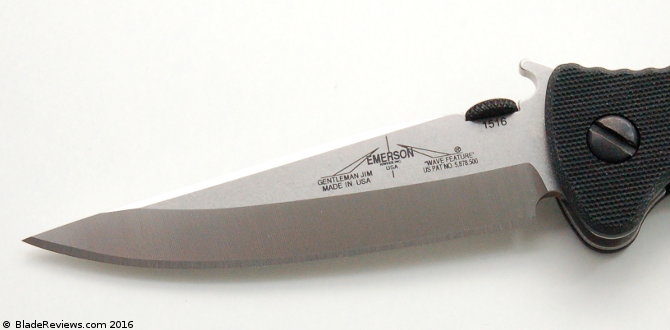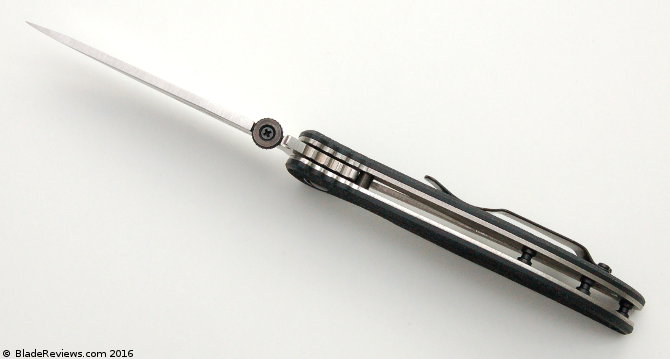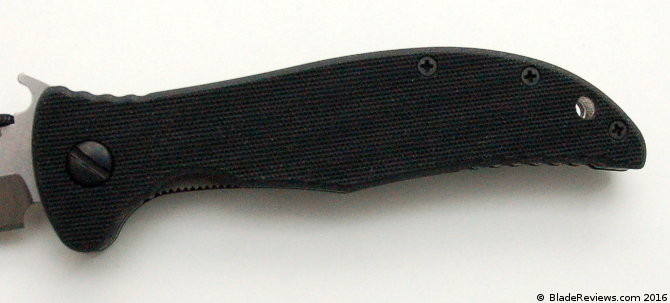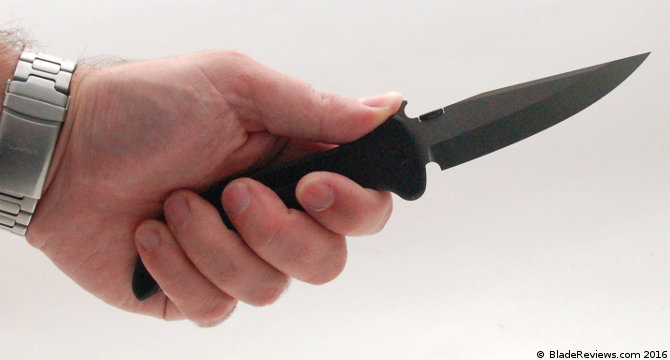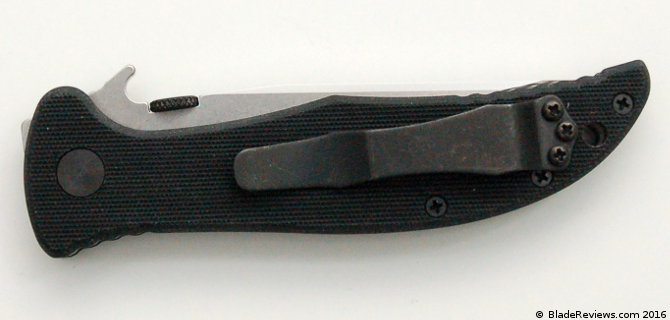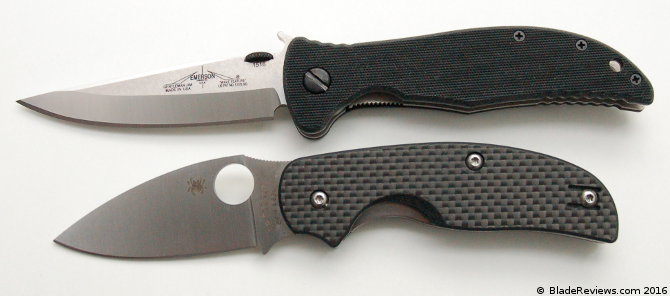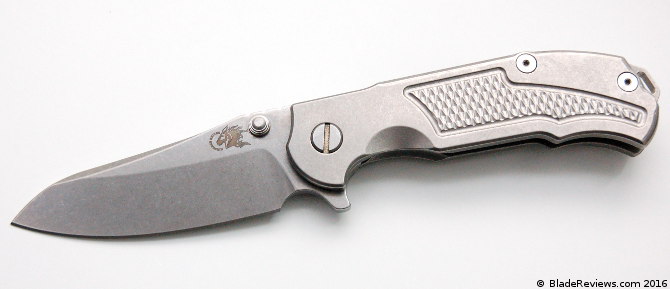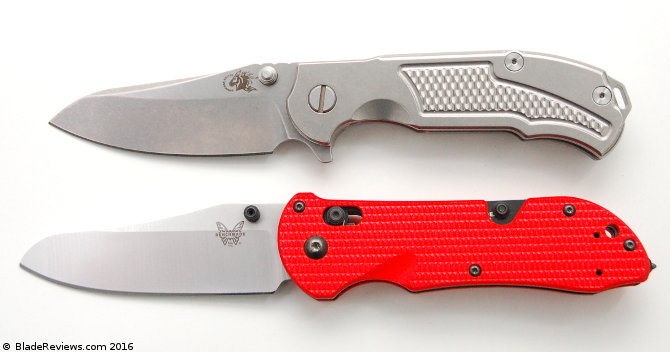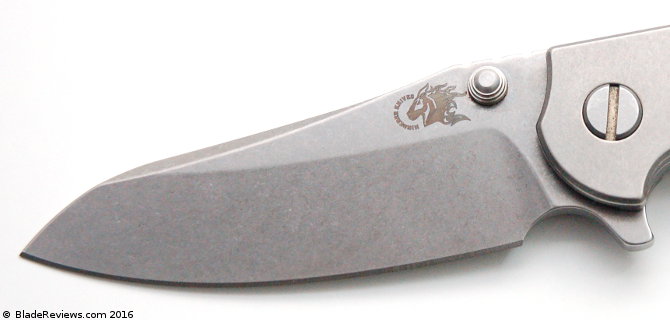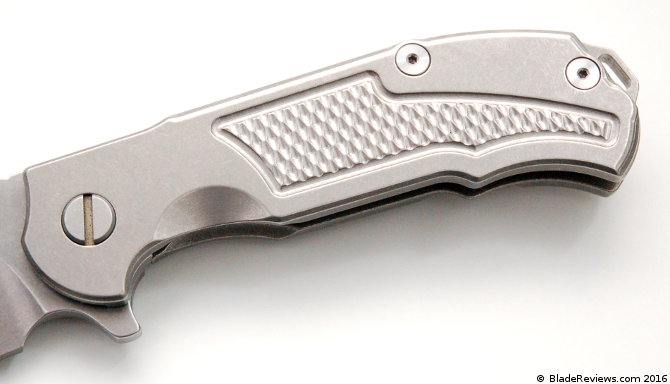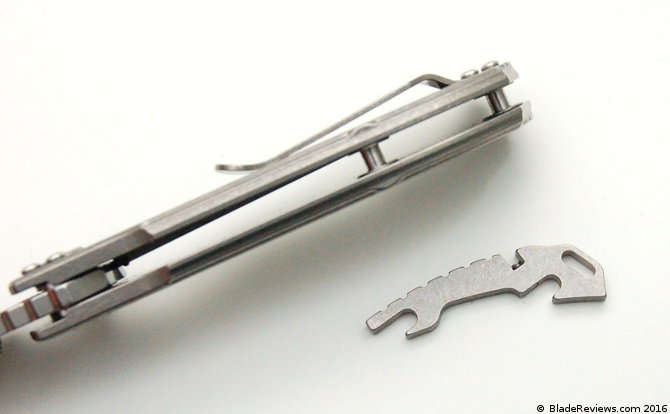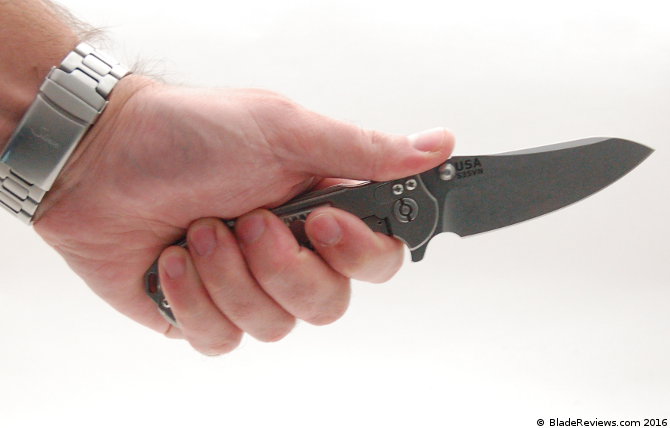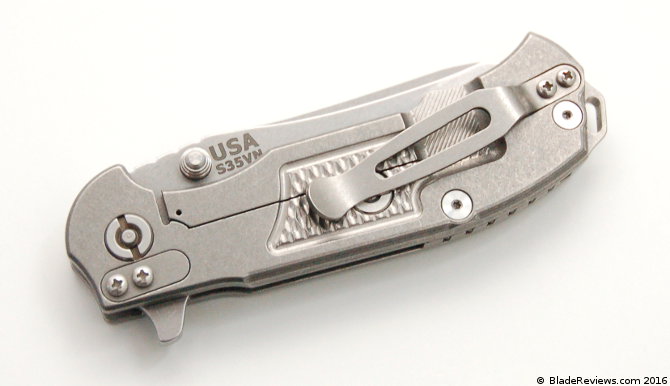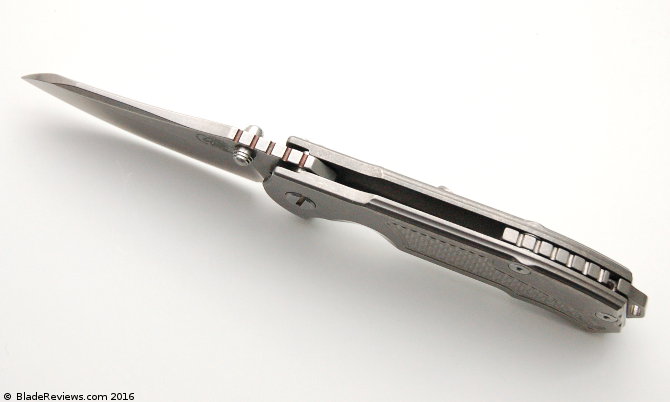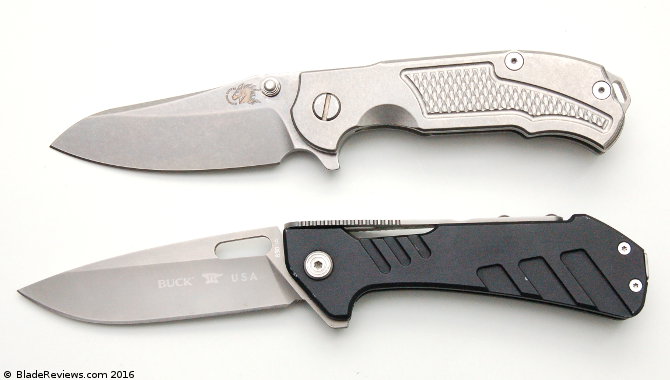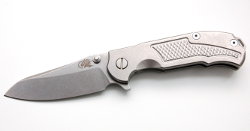The Para 3 started as a fantasy: “Wouldn’t it be great if there were a smaller version of one of the most storied modern production knives of all time?” Then, this fantasy became a rumor, and that rumor became a confirmed project. Then there was a year-long lull. Then all of a sudden, in a whirlwind three months, the Para 3 was unveiled and released.
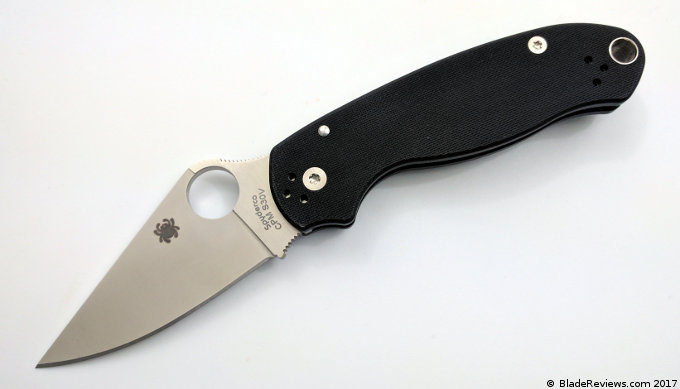
Buy the Spyderco Para 3 at BladeHQ
[easyazon_cta add_to_cart=”default” align=”center” asin=”B01NBRLS5S” cloaking=”default” height=”42″ key=”tall-orange” localization=”default” locale=”US” nofollow=”default” new_window=”default” tag=”brdfkdfk-20″ width=”120″]
Expectations were not just high, they were at that particular airless altitude where it’s hard to say that people were even aware of just what it was they were asking for. Companies like SOG, Cold Steel, and CRKT habitually release their knives in different sizes – why were we getting so excited about the Para 3?
Well certainly the Paramilitary 2 has a reputation few production knives can match. The knife community is almost unanimous in its praise for the PM2. Most of the criticism comes in the form of wishing for a smaller version. So if the Para 3 address this one issue, wouldn’t it be a perfecter version of a nearly-perfect knife?
No doubt about it, there’s a lot to talk about here. So let’s get into it.
General Dimensions and Blade Details
The Para 3 has a blade length of just about 3”, with a cutting edge of 2 5/8”, an overall length of 7 1/8”, and a weight of 3.37 oz. It is made in Golden, CO, and is the first Spyderco I’ve handled that was produced in their new facility. Although the Golden, CO knives are fundamentally different in overall ethos than the Taichung stuff, if this Para 3 is a fair representative of the new plant’s capabilities, they are every bit their equal in terms of fit and finish. Unlike some of those fine knives, however, the Para 3 doesn’t feel like a collectible in any sense. This is an immaculately finished EDC blade that you’re meant to use.
What do we call this particular Spyderco blade shape? To me it’s always been their most iconic, appearing on the PM2, the FFG Delica/Endura, and the full-size Military. It’s a great shape for everyday cutting, with all the cutting surfaces you want: straight edge, belly, and a pointy tip. Little performance is lost in the transition to a sub-3” cutting edge, either. It might be a little less efficient in long cuts (as through cardboard), but it gains a little more maneuverability, and that seems like a fair trade.
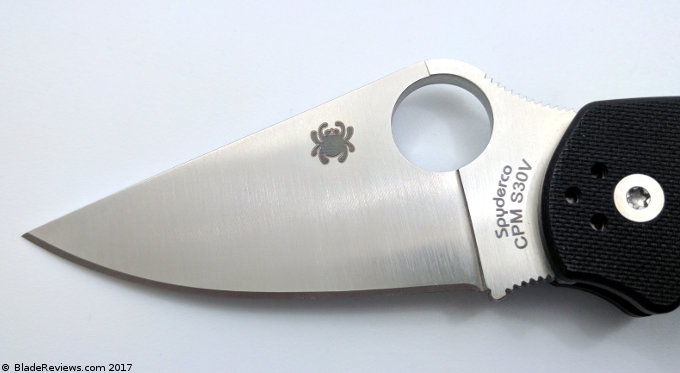
Spyderco is thought of as an ergonomics-oriented company, but they also always emphasize cutting performance. The Para 3 embodies a lot of Spyderco philosophies, but perhaps this one most of all. The blade stock is thicker than even the saber ground Delica, and yet the flat grind is such that the Para 3 remains a top-tier slicer. It’s tough and aggressive when it needs to be, but graceful and delicate when the situation calls for it. The satin finish is perfectly done to reduce friction as well – definitely a better finish than Taichung.
Some would have it that Spyderco’s S30V is sub-par, but others praise it to the skies. After using it on my Zulu, PM2, and now Para 3, I’m comfortable saying it’s very good. It doesn’t stay hyper keen after a day or two of frequent use, but it retains a clean, usable edge for a very long time. As for sharpening – well, I’m beginning to learn that any steel requires time and attention to sharpen properly. Be patient and maintain a steady hand, and it’s possible to get S30V very sharp, even with rudimentary skills and entry-level equipment.
Handle, Ergonomics, and Pocket Clip
The Para 3’s handle is very similar, but not identical to, the PM2’s. In addition to the obvious reductions in length, it has a more curved spine than its bigger brother. The edges of the G-10 have also been hit with a mild chamfer. Material choices are the expected (but excellent nevertheless) G-10 with nested stainless steel liners.
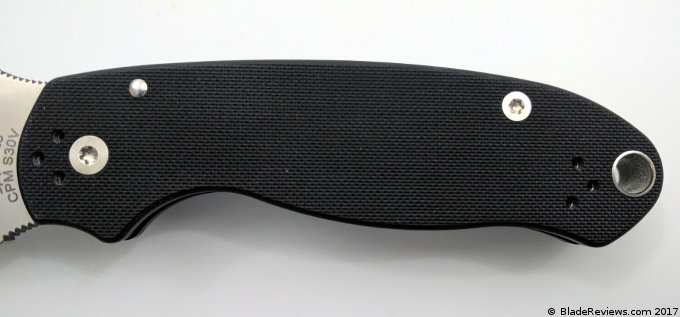
I think it’s safe to say that the ergonomics are what makes the PM2 so popular. Rarely is a knife so agreeable in the hand, and when it is, it allows all the other excellent elements to shine even brighter. The Para 3’s ergonomics is a story in three parts, starting with the forward finger choil and ending, surprisingly, with the clip.
Utilizing the forward choil, the Para 3’s ergos are excellent. Control over the smaller blade is exemplary, and you’ll have no problem with most cutting tasks. Even smaller details contribute: the curved butt end keeps things comfortable when you’re holding the knife hard or pressing down during a cut. Also, thanks to Spyderco for keeping the finger choil the same size as on the PM2. Nothing more disappointing (nor weirdly prevalent) than a too-small finger choil.
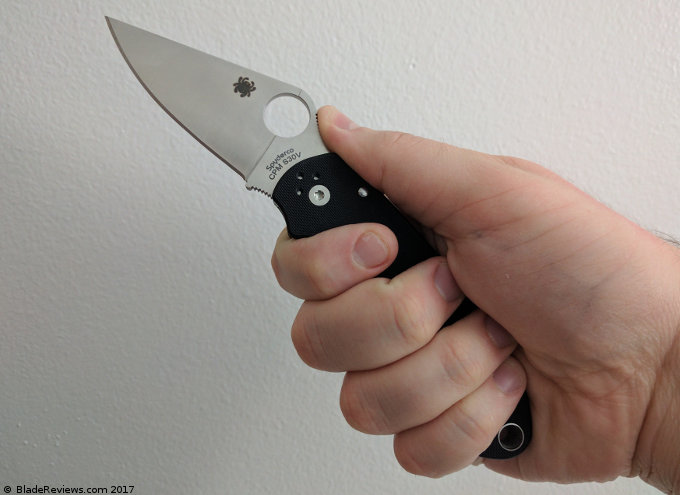
Moving down toward the main part of the handle, the news is less good. If I’m not using the choil, I can’t quite fit all four of my fingers in the main portion of the handle. My pinky usually lands right on the beak at the back, or falls back behind it. The beak isn’t so pointy that it would create a hot spot during most use, but the PM2 was so accommodating in both grip styles that it’s a bummer the smaller Para 3 can’t quite pull it off.
The clip also presents issues. The Spyderco spoon clip is utterly solid in and of itself. I have no complaints with the way it works as a pocket clip. Early reviews/opinions of the Para 3 have lamented the fact that it doesn’t carry deeply due to the large lanyard hole, which has to go above the clip instead of beside it as on the PM2. This means that a good bit of knife is sticking out of your pocket. I didn’t mind this, but I did mind the way the clip interferes with the grip in both positions. The problem is that it goes across so much of the usable handle it’s bound to press uncomfortably somewhere at some point. Not a constant hotspot, but it is noticeable enough to meaningfully detract from the in-hand experience.
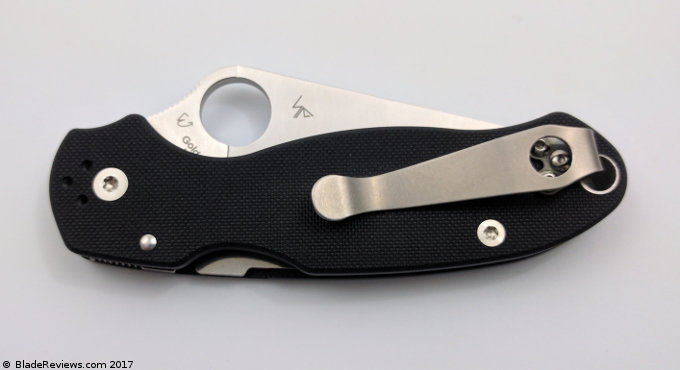
As you can see from my pictures, I found a solution to this particular problem. Casey Lynch of Lynch Northwest is well-known for his aftermarket Spyderco pocket clips, and his short clip works perfectly on the Para 3 – and I mean perfectly: it feels like it was made specifically for this knife, and it fixes every issue the stock clip presents. The deep carry is just a bonus for me. Do I think you need the clip to enjoy the Para 3? No. Even stock, ergonomics are well above average. They just aren’t quite as good as the PM2 and the clip helps close that gap.
Deployment and Lockup
If you do a deep-dive on their forums, you’ll find that Spyderco’s bushing/stepped pivot system has been the subject of much discussion over the years. Nobody questions the fast deployment and free-swinging blade, just the variance in terms of lockup from knife to knife. You can get a PM2 that deploys with lightning speed, but you’ll rarely find one that you can dial all the blade play out of, no matter how slight. That was the case with my PM2, although it never bothered me.
My Para 3 appears to have the same pivot, but is even faster than my PM2 to deploy. It flips open with any sort of positive pressure at all – truly thoughtless deployment. It also stands firm once locked up, with nary a hint of play in any direction. On the PM2 I’ve found the Compression Lock to be a somewhat finicky one to maintain, but I’ll chalk that up to my inexperience rather than some mechanical failing. In terms of the Specialty Locks I think I like the Compression Lock best, despite my personal hang-ups. It offers serious strength while still keeping deployment smooth and fluid.
Para 3 Vs. Sage 5
The Para 3’s strongest competition comes from within Spyderco’s catalogue – and it’s NOT the PM2. I know a lot of people will get both, but to me the size difference is enough to put them in separate knife categories. The Sage 5, however, was released just months ahead of the Para 3, and is in the same product class of the PM3: EDC Compression Lock folder with a circa 3” blade.
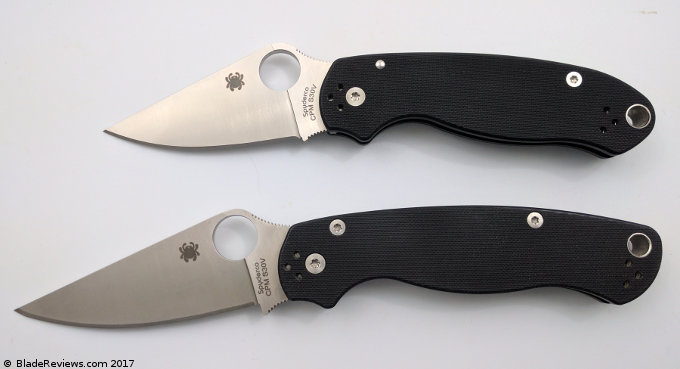
The Sage 5 doesn’t have the mystique of the Para 3, but it is quite competitive in an objective sense. It’s lighter and it is better in the hand. The little beak and ill-placed clip that cause so much ergonomic drama on the Para 3 are gone on the Sage 5.
The Para 3, however, is an unquestionably better rendition of the Compression Lock: faster deployment and non-existent blade play where the Sage 5 is sluggish and has a little wobble. It is also better balanced; both knives offer phenomenal blade control but the Para 3 is more graceful and responsive.
How about cost? Well, the Sage 5 is about $15 more – not enough to give most of us pause, but tangible. And I’ll say that I think the Para 3 is perfectly priced. It is worth exactly $120 to me, and pretty much sets the limit for what I consider sensible spending on a pocket knife.
Ultimately, you can’t go wrong with either, and a full-fledged showdown between the two might be worth doing, but off the cuff I’m giving the nod to the Para 3: ergonomics are important, and the Sage 5 edges out the Para 3 in this category, but I like the blade shape and mechanics better on the Para 3, and it is certainly not a disaster in hand. And hey, you can use the $15 you save to buy a Casey Lynch clip and solve half of that problem anyway.
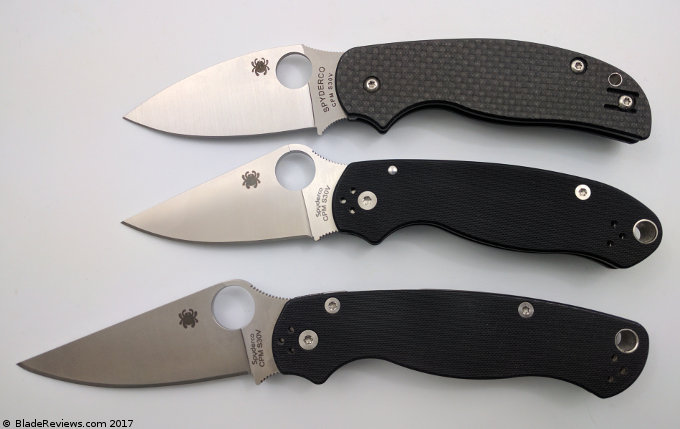
Spyderco Para 3 Review – Final Thoughts
The Para 3 has been so long in the coming that in some ways it’s just a relief to be able to say a bunch of nice things about it. I was a little skeptical that scaling down the PM2 would be redundant, but Spyderco managed to make it feel like a different knife, and a great one at that.
That being said I’m also not totally blown away. Some things to consider: If you can legally own the PM2, I still think it edges the Para 3 out in terms of design. Technically they aren’t in the same use category, but they do share design fundamentals and I’d rather have more variety amongst my tools than two very similar albeit excellent knives. The Delica 4 is a great EDC knife for half the price. There is also the Sage 5 to consider, as well as knives like the Native 5 and Caly 3.
So I guess the worst thing I can say about the Para 3 is that it’s just another great Spyderco design. This is an excellent follow-up to what is arguably their best knife. Is it a must buy world beater? No. But Spyderco managed to bring something long wished-for to life without losing the magic, and in and of itself that’s an accomplishment.
[easyazon_block add_to_cart=”default” align=”center” asin=”B01NBRLS5S” cloaking=”default” layout=”top” localization=”default” locale=”US” nofollow=”default” new_window=”default” tag=”brdfkdfk-20″]
Editor: I recommend purchasing the Paramilitary 3 at Amazon or BladeHQ. Purchasing anything through any of the links on this site helps support BladeReviews, and keep this review train running. As always, any and all support is greatly appreciated.
